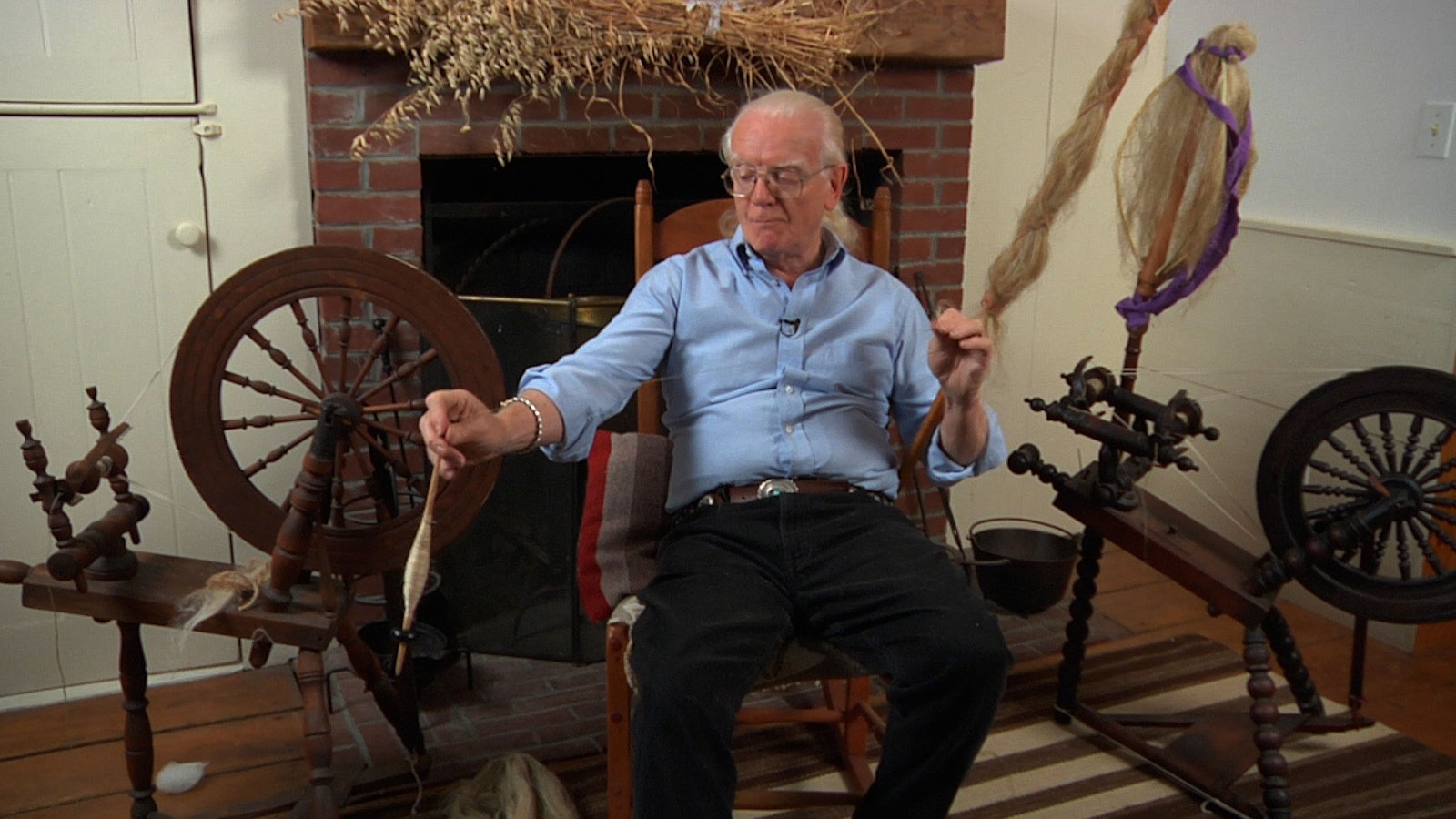What I wish history class had been like

Norman Kennedy demonstrating breaking up the husk of the retted flax plant to harvest the fiber.
Thank goodness for those in our community who keep traditional techniques alive. Norman Kennedy is one of these treasures. We were lucky to record some of his vast knowledge to share with spinners everywhere with our newly released DVD, Spin Flax and Cotton: Traditional Techniques with Norman Kennedy. It is enlightening to spend 90 minutes with Norman learning about not just traditional flax in his native Scotland (and adopted home of the American Northeast) but also historic cotton spinning in the Cajun country of Louisiana. And it is so much more interesting than any history lesson I had in school.
 Norman Kennedy demonstrating spinning on an antique wheel with double fliers for increased production by one spinner (not for two spinners to gossip as has sometimes been suggested). | |
Norman goes into quite some depth about historic production of linen cloth and how it fit into daily life. He outlines how flax was harvested and retted and how the fiber was separated from the woody core (boon), loaded onto distaffs, and spun on spindles and wheels. It is great in that he uses traditional tools from the flax break to antique wheels and spindles. His demonstrations focus on how these tasks fit into the daily lives of people for generations. He interjects with stories that bring history alive: love notes snuck into a maiden's distaff loaded with linen to be discovered as she spun, ornate tools given as tokens of love, exceptional skeins hung by the mantel to raise the bar for visiting spinners, and practical traditions such as rhymes to be said while winding yarn on a niddy noddy to track the length of your skein for sale.
 Norman Kennedy spinning cotton by drafting out a length of fiber and then adding twist. | |
Norman then shares an overview of historic cotton production, its global nature and introduction to Europe, as well as how processing the fiber has evolved over time. He demonstrates what he has learned through visits with traditional cotton spinners in the Cajun country of Louisiana. The most fascinating for me was bowing cotton to open up the fiber after the seeds have been ginned. It was also really enlightening to see how he spins by drafting out a length of fiber to the thickness he wants and then adding the twist both on a spindle and walking wheel. Pairing these two techniques exemplifies how similar these two tools really are.
A bonus segment on indigo dyeing is an unexpected surprise as well as outtakes and a preview of Norman's upcoming video on spinning wool (out late November). It is clear that Norman Kennedy has a wealth of knowledge in many areas and we are lucky to have him as part of the spinning community as well as the textile community. He has amassed an amazing amount of history and information and he shares it willingly and in a fascinating way (sometimes through song!).


